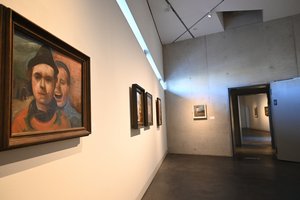
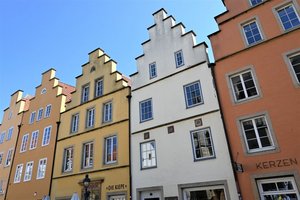
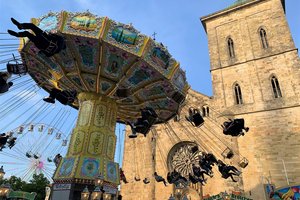
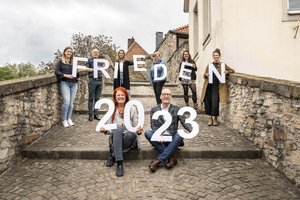
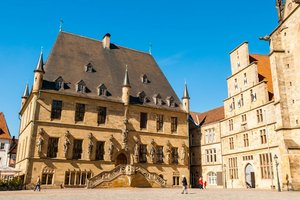
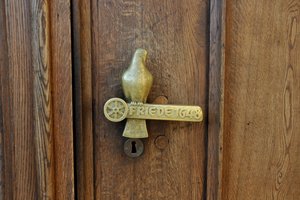

The Museum Quarter Osnabrück unites four houses from different eras: The Felix Nussbaum House (1998) including its extension (2011), the Museum of Cultural History (1888/1899), the Akzisehaus (1807) and the Villa Schlikker (1900/1901).
While the Felix Nussbaum House houses the internationally largest collection of works by the painter Felix Nussbaum, the Museum of Cultural History is dedicated to Osnabrück's city history and an extensive collection of graphic works by Albrecht Dürer, including woodcuts and copper engravings. The Villa Schlikker sees itself as a place of learning against racism and exclusion. The former customs house "Akzisehaus" serves as a venue for various small exhibitions, readings, concerts, lectures and presentations.
Integrated into the neighbourhood and in particular the Felix Nussbaum House, is the 17th century stone arched bridge (also called the "Ravelin Bridge"). It was rediscovered during the preparations for the construction of the Felix Nussbaum House in 1996. It spanned the city moat and was part of the former Heger Tor Gate bastion. The bridge probably also included a drawbridge and a gate building. Experts believe that this structure was one of the most advanced of its time.
Born in Osnabrück on 11 December 1904 as the son of the middle-class Jewish merchant spouses Philipp and Rahel Nussbaum, he grew up in an environment of security and musical and artistic influence. In 1924, Felix Nussbaum began studying art in Berlin, where he met his future wife, the Polish painter Felka Platek. Nussbaum started an impressive career. As early as 1932, he travelled to the Villa Massimo in Rome as a study guest of the German Academy. The emerging discrimination after the National Socialists seized power also made itself felt in Italy. Nussbaum left Rome and arrived in Belgium together with Felka Platek in February 1935. With the outbreak of the Second World War and the invasion of German troops, Nussbaum was initially imprisoned in the Saint Cyprien camp in southern France, but fled back to Belgium in the summer of 1940. There he hid with his wife in various places until 1944. On 20 June 1944, they were both arrested and deported to Auschwitz via the Mechelen collection camp and murdered; the date of their deaths is unknown. His paintings, hidden in Brussels, were rediscovered 15 years later by one of Nussbaum's cousins. Like hardly any other artist of his generation, Nussbaum processed the Holocaust in his works. They deal with the themes of flight, expulsion, war and question cultural and religious identity.
| Price information | Adults: 8,- € reduced: 6,- € up to 18 years: free |
|---|
Please inquire on the homepages or directly in the respective houses about the current opening and event times, prices, cancellations, etc.. This information can change at short notice!